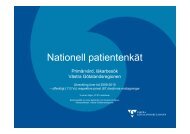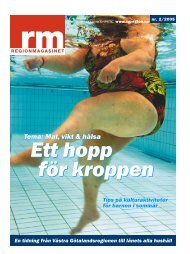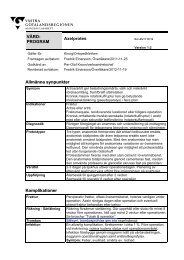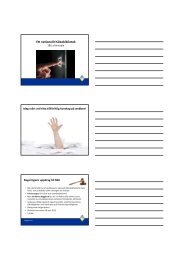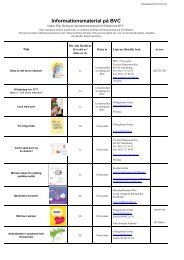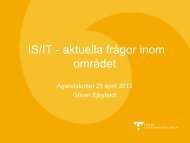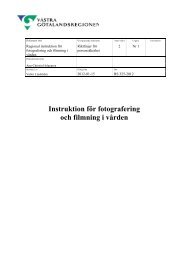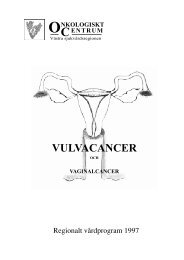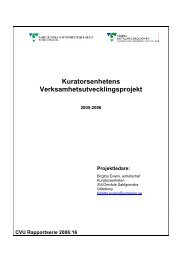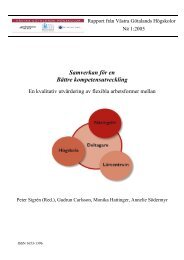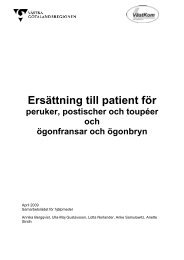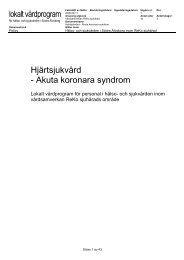FOURTEENTH ANNUAL EUROPEAN PRESSURE ULCER ...
FOURTEENTH ANNUAL EUROPEAN PRESSURE ULCER ...
FOURTEENTH ANNUAL EUROPEAN PRESSURE ULCER ...
Create successful ePaper yourself
Turn your PDF publications into a flip-book with our unique Google optimized e-Paper software.
Thursday September 1st<br />
Proceedings of the 14th Annual European Pressure Ulcer Meeting<br />
Oporto, Portugal<br />
Pressure Ulcer Assessment<br />
Marco Romanelli, Valentina Dini, Isabella Banchini, Alice Canale, Sabrina Barbanera.<br />
Introduction<br />
Department of Dermatology, University of Pisa, Italy, m.romanelli@med.unipi.it<br />
Assessment of cutaneous wounds in<br />
order to detect the progression of a<br />
disease is a routine part of medical<br />
practice. Although measurement<br />
technology has evolved continuously<br />
over the years in all fields of<br />
medicine, its direct application to<br />
cutaneous disorders has increased<br />
only in recent years (1). In fact, only<br />
over the past decade has significant<br />
research been undertaken to further<br />
develop techniques for specifically<br />
examining the skin. Advances in both<br />
the technology of imaging and<br />
computer systems have greatly<br />
supported this process and brought it<br />
closer to the clinical area. The authors<br />
present a new wound measurement and<br />
documentation system.<br />
Methods<br />
We collected wound planimetry in 30 patients<br />
affected by pressure ulcers. To estimate the<br />
repeatability and the reproducibility of wound<br />
assessment, 2 female students participated<br />
in this study. The intra- and inter-rater<br />
reliability of measurement were observed<br />
using intraclass correlation coefficient (ICC)<br />
and Bland-Altman test.<br />
Results<br />
No statistically significant differences were<br />
found between scans evaluated by 2<br />
investigators about wound area and depth.<br />
The ICC values were excellent either for<br />
intra- or inter-rater reproducibility with a very<br />
low relative error value. The intra- and interrater<br />
measurement were demonstrated to be<br />
reliable as indicated by high ICC values (><br />
0.80). The mean ± SD time for a full scan<br />
67<br />
acquisition on the wound area and depth was<br />
2.2 ±1.2 minutes.<br />
Discussion<br />
The scanner was found to be accurate and<br />
reliable, easy to learn and use, portable and<br />
compact. The results presented suggest that<br />
this device may be a viable choice in the<br />
management of different types of chronic<br />
wounds.<br />
Clinical relevance<br />
Wound measurement is essential in<br />
assessing the progress of wound healing.<br />
The most commonly used tools include<br />
wound tracing, width and length<br />
measurements, and digital photography.<br />
This innovative device combines a digital<br />
camera and structured lighting in the form of<br />
2 laser beams to automatically correct for<br />
image scale and skin curvature, allowing<br />
rapid and accurate measurements of the<br />
wound surface area and depth.<br />
Acknowledgements<br />
We appreciate the help of Mrs. Graziana<br />
Battaglia<br />
Conflict of Interest: None<br />
References<br />
[1] Schultz G, Mozingo D, Romanelli M,<br />
Claxton K. Wound healing and TIME: new<br />
concepts and scientific applications. Wound<br />
Rep Regen 2005; 13 (4): S1-S11.<br />
Copyright © 2011 by EPUAP



